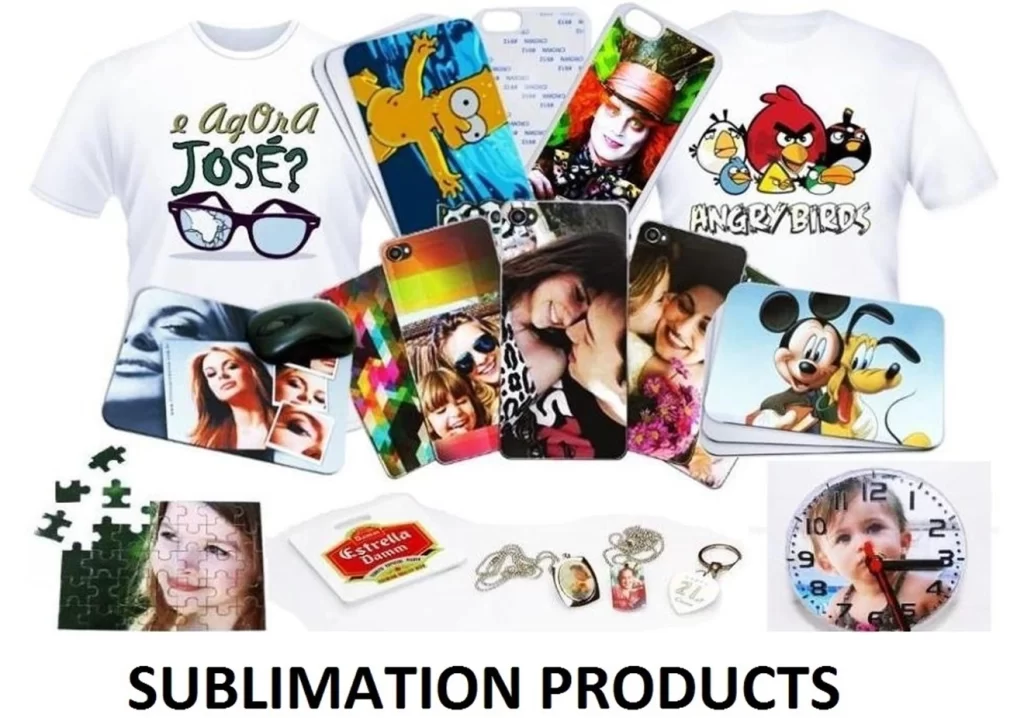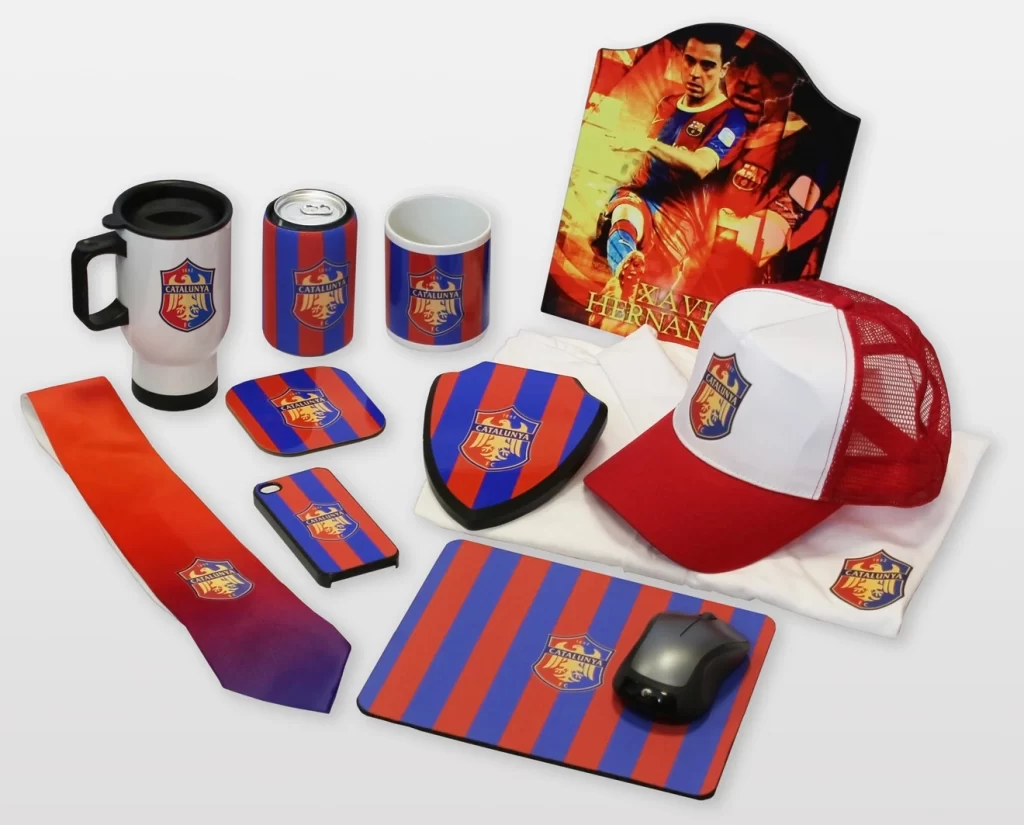Difference Between DTF and Sublimation [2025]
DTF( direct-to-film)and sublimation printing are two popular printing methods that are used for adding custom designs on a variety of materials like textiles, garments, and hard surface products.
Although heat is used in both methods to put the design on the substrate, there are some notable distinctions between them. This post will break down the difference between DTF and sublimation, and that way, it will be easy to know which one to use for your needs and printing requirements.
Table of Contents
Difference between DTF and Sublimation Printing
The following table summarizes the key difference between DTF printer and sublimation printing:
| Characteristics | DTF Printing | Sublimation Printing |
| Printing Process | Design is printed onto PET film, cured with adhesive powder, and then transferred onto the substrate by heat press. | Design is printed onto sublimation paper, and then transferred onto the substrate using heat. |
| Fabric Compatibility | Can print on a variety of fabrics, including dark-colored and 100% cotton fabrics, canvas, linen, and non-woven fabric. | Can only print on light fabrics like nylon, acrylic, and polyester. |
| Print Quality | Vibrant colors with the finest details. | High-quality and photo-realistic images. |
| Durability | Good durability, but not as durable as sublimation prints. | Very durable and resistant to fading. |
| Cost | More expensive than sublimation printing. | Less expensive than DTF printing. |
Size of Print | It has comparatively smaller platens, so it requires a lot of repasses to fully cover the cloth with print. | The platens are larger, hence consuming less time to fully cover the cloth with print, making it ideal for larger print runs. |
| Ease of use | Relatively easy to apply, making it a good choice for beginners. | It is more difficult to apply than DTF printing, but still relatively easy. |
What is DTF Printing?
DTF printing is an advanced printing method used for custom apparel decoration. Its popularity is a result of producing first-class bright, sharp, and detailed prints on various media or fabrics. The printing technology is easy enough for printing promotional accessories and making custom cloth out of different materials (such as cotton, polyester, and nylon).
For DTF printing, the design is first printed onto a PET film (polyethylene terephthalate) using a four-color overlay CMYK process by a specialized inkjet printer. The film is coated with a resin-based DTF powder adhesive. The extra powder is removed from the film and then transferred onto the substrate using a heat press.
Vivid colors and unparalleled durability are distinctive features of DTF printing. Being simple for application is another reason it’s ideal for beginners.
Pros of DTF Printing
- Can print on any type of fabric
- Vivid colors and good durability
- Relatively easy to apply
- Excellent color vibrancy
- Suitable for both light and dark fabrics
- Allows for intricate and detailed designs
- Ideal for small to medium print runs.
- Can print on rigid surfaces
- It is photo-realistic and the printing process is fast
- The printer doesn’t require any maintenance
Cons of DTF Printing
- Not as durable as sublimation prints
- More costly than other methods for large quantities
- Not as eco-friendly due to film waste
- The prints may crack and peel over time
- DTF printers require high maintenance and are hard to set up

What is Sublimation Printing?
Sublimation printing is an advanced digital printing technique that has existed for a long time. It is a chemical procedure that uses heat to transfer ink from a solid to a gas state, which adheres to the fibers of the substrate. These prints stand a cut above the others for their remarkable photo-realistic images. On the other hand, they are quite long-lasting and fade-resistant, too.
This process kick-starts with the application of sublimation ink onto a particular sublimation transfer paper. The ink is made of solid pigments which when heated and pressurized, turned into gas however are not liquefied. As a result, the gas passes through the polyester fibers and then solidifies again as it forms strong bonds.
The sublimation printing method is a very good solution for producing high-quality prints on polyester fabrics that not only give a smooth feel but also keep moisture-wicking function intact. For this reason, it’s a popular option for printing on sportswear, team uniforms, and training outfits.
Pros of Sublimation Printing
- Vivid and long-lasting colors
- Very durable and resistant to fading
- Suitable for polyester-based fabrics
- No additional layer on the fabric, resulting in a soft feel
Cons of Sublimation Printing
- Limited to polyester fabrics
- Cannot achieve white or light-colored designs on dark fabrics
- Colors can fade over months due to UV rays if constantly exposed to sunlight

What is the Key Difference Between DTF and Sublimation?
DTF and sublimation printing are two different printing methods; each with its own pros and cons. Here are some key difference between DTF and sublimation printing techniques:
- Printing Process
DTF Printing: In DTF printing, the process begins with creating a digital design by using the software. It’s printed onto a specialized film sheet using a DTF printer. This pattern is cured with the help of a DTF powder shaker machine. The print is then transferred from the printed film to the garment or fabric through a process known as heat press. The ink on the film comes out of its haven and “knits” with the fabric when heat and pressure from the pad are generated for 10-15 seconds.
Sublimation Printing: Sublimation method instead involves applying sublimation ink to a special transfer paper. This is done by printing the design on this paper and then pressing the papers with a heat press on the fabric. In this process, sublimation ink changes into a gas and dyes the polyester fibers.
- Fabric Compatibility
DTF Printing: DTF printing is also multipurpose and you can screen print on different kinds of fabric such as canvas, linen, cotton, polyester, and blends. It works well on both light and dark-shaded fabrics, so they look neat and customized.
Sublimation Printing: Sublimation print works accurately with polyester-based fabrics. It does not work efficiently on natural fabrics such as cotton. The best choice for sublimation printing is white or light polyester fabrics. By using either printing process products with hard surfaces like plastics, metal, ceramic, and wooden materials can be printed.
- Color and Detail
DTF Printing: DTF printing produces complex and vibrant designs with photo-realistic quality. It can achieve sharp details and complex color gradients, making it suitable for detailed graphics on fabrics.
Sublimation Printing: Sublimation printing is known for its energetic and long-lasting colors. It excels in producing rich, continuous-tone designs, ideal for items like sportswear with bold and colorful logos.
- Feel and Texture
DTF Printing: DTF prints often result in a slightly raised texture on the fabric due to the DTF PET film used in the process. While not as soft as some other methods, it still provides comfortable wear.
Sublimation Printing: Sublimation printing leaves no additional layer on the fabric. It gives a soft, durable, and comfortable feel. The print becomes part of the fabric, so there’s no noticeable texture.
- Print Complexity
DTF Printing: With DTF printing, you can print small details and graphics with full-color designs. If you want to print photos, this method may not be suitable for you. A large printing area is required for DTF printing, which means the garment is less comfortable to wear for a longer time.
Sublimation Printing: With sublimation printing on hand, you can do detailed printing of different complexity. This printing method is best for digital photos, colorful artwork, and pattern designs. Compared to DTF printing, this method can cover the entire garment.
- Eco-Friendliness
DTF Printing: DTF printing does produce waste in the form of material (film) used for transfers. It could possibly not be as environmentally friendly as other techniques.
Sublimation Printing: As environmental discussions gain momentum, sublimation printing is also seen as a more sustainable alternative that generates very little waste. The sublimation ink turns to vapors, thus leaving no trace after.
- Suitable Applications
DTF Printing: DTF printing is used for various purposes, from custom apparel and items for marketing to personalized merchandise. It is highly suitable for short and medium-sized print jobs.
Sublimation Printing: Sublimation printing is mainly applied to specialized sportswear, team uniforms, and promotional products, as well as those areas where colorful, full-font, and durable designs are required.rtwork, and pattern designs. Compared to DTF printing, this method can cover the entire garment.

Which Printing Method is Right for You?
The best printing method for you depends on your specific needs and customer requirements. Both printing methods have their limitations and benefits.
If you print on fabrics of various shades, from light to dark ones, the direct-to-film printing technology will be the correct choice you are looking for. Yet for printing a high level of photo-realistic colors on light fabrics, sublimation printing is a good alternative.
For nylon and polyester-based soft fabrics like sportswear and promotional items, you have to resort to sublimation printing. This technique is the most suitable if you don’t want white or bright-colored designs on darker fabrics.
For large-scale printing, sublimation printing is more suitable, as it has larger platens to accommodate more print runs. DTF printing is more suitable for smaller and more manageable print runs.
Other Factors to Consider
In addition to the factors discussed above, there are a few other things to keep in mind when considering the difference between DTF and sublimation printing:
- Simple Use: DTF Printing can be slightly more complex due to the various steps involved—printing, powdering the transfer, curing, and pressing onto the fabric. However, once learned, it’s relatively straightforward. Sublimation printing is simpler, especially for beginners.
- Application Speed: If you’re in a hurry, go for sublimation printing. Once printed, the sublimation process is quick and can be applied in bulk. On the flip side, DTF printing takes longer due to the curing and powdering process before applying the design to the fabric.
- Environmental Impact: Although both printing methods generally have environmental considerations. DTF printing results in ink cartridge waste and this waste after disposal threatens the environment. Moreover, sublimation is often deemed a more eco-friendly technique for shrinking waste.
Application of DTF and Sublimation Printing
Both printing methods are used for a variety of products, including:
- T-shirts and other garments
- Mugs and other hard goods
- Signs and banners
- Home décor items
- Promotional products
DTF printing is particularly well-suited for printing on hoodies, T-shirts, sweatpants, flags, banners, and tote bags. While sublimation is for printing on home decor items, jerseys, and swimwear.
Conclusion
DTF and sublimation printing are both versatile printing methods used for a variety of products. A detailed difference between dtf and sublimation is discussed above. To make an informed decision, carefully evaluate your project’s specifics and prioritize your printing needs accordingly.
No matter which method you choose, quality perfection and print quality will make your business look its best. By choosing the right method, you can get outstanding results that meet your expectations and delight your customers.
